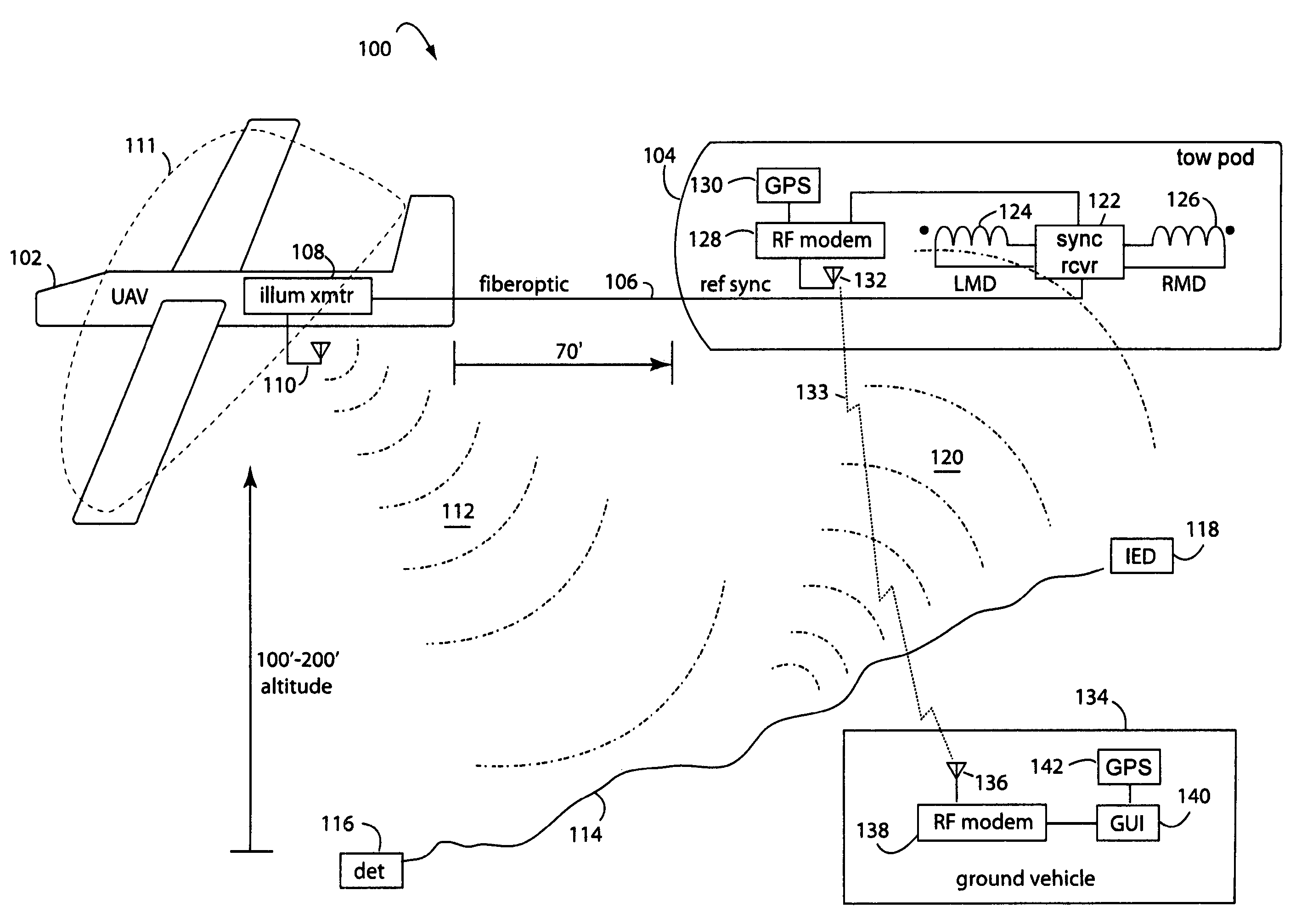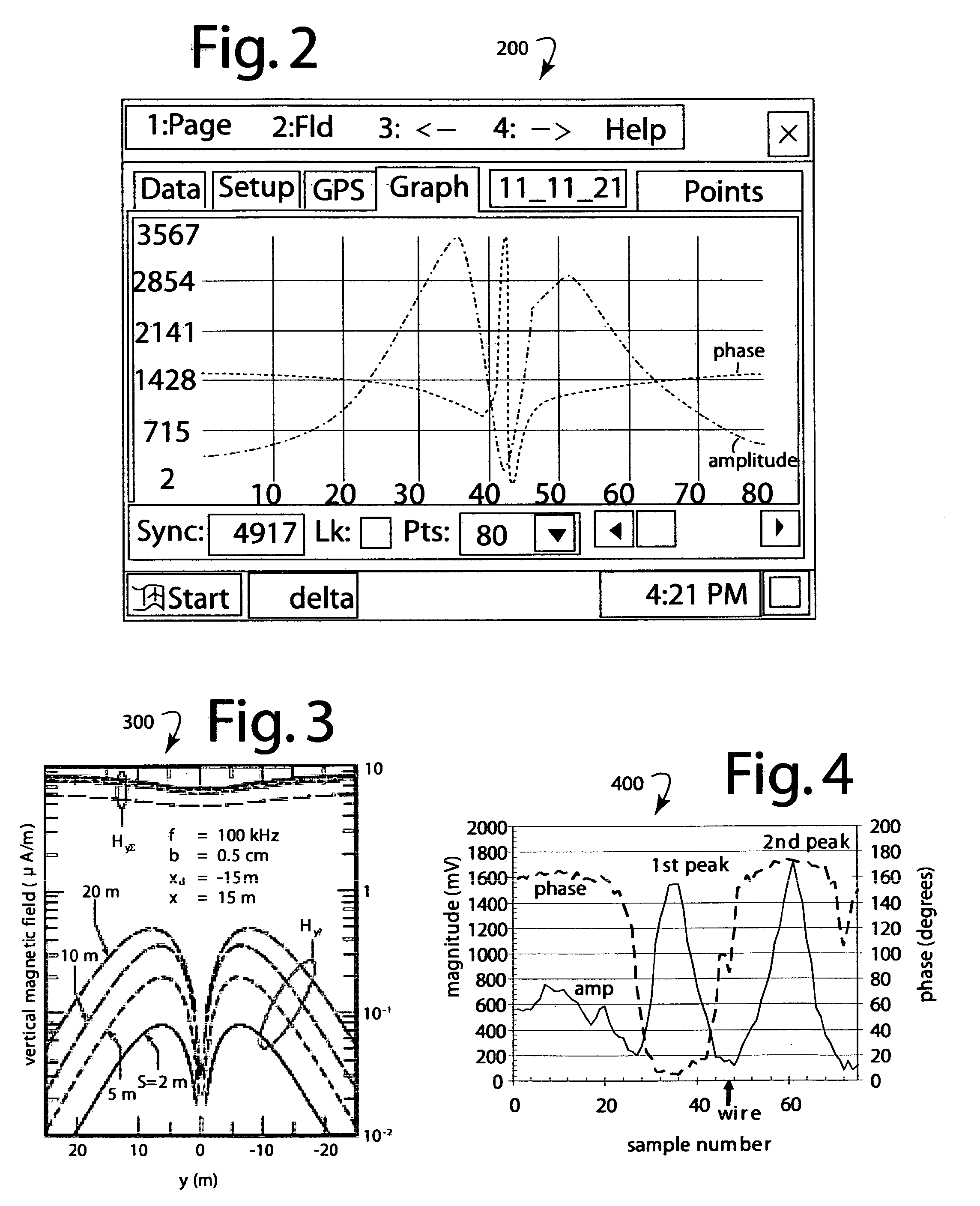Aerial detection of threatening military devices
a military device and aerial detection technology, applied in the field of electronic detection of improvised explosive devices and underground threats, can solve the problems of difficult countermeasures, secondary field detection in the presence of much larger primary field components,
- Summary
- Abstract
- Description
- Claims
- Application Information
AI Technical Summary
Benefits of technology
Problems solved by technology
Method used
Image
Examples
Embodiment Construction
[0027]A gradiometer antenna array may comprise two ferrite-core magnetic dipole antennas (LMD and RMD) electrically coupled and 180-degrees out of phase. This is called the differential mode of operation. For maximum primary wave cancellation, the antennas are coaxial, antenna rod axes along same axis, and oriented on a base line perpendicular to an intended target's trend. The magnetic dipole antennas may also be connected in the summation mode of operation. In this case, the instrument would not operate as a gradiometer, but as a single magnetic dipole. LMD and RMD antennas may be configured as vertical or horizontal magnetic dipoles. During field tests, a horizontal magnetic dipole configuration was used. The instrumentation used a central electronics enclosure and telescoping antenna assembly enclosed in fiberglass. The antenna assembly tubing had a center section with the synchronization and calibration antenna (SMD). Measured data was transmitted to a remote lap-top computer v...
PUM
 Login to View More
Login to View More Abstract
Description
Claims
Application Information
 Login to View More
Login to View More - R&D
- Intellectual Property
- Life Sciences
- Materials
- Tech Scout
- Unparalleled Data Quality
- Higher Quality Content
- 60% Fewer Hallucinations
Browse by: Latest US Patents, China's latest patents, Technical Efficacy Thesaurus, Application Domain, Technology Topic, Popular Technical Reports.
© 2025 PatSnap. All rights reserved.Legal|Privacy policy|Modern Slavery Act Transparency Statement|Sitemap|About US| Contact US: help@patsnap.com



